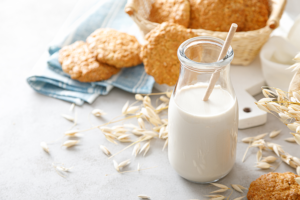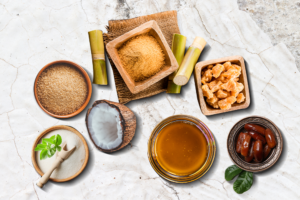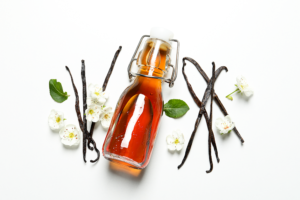A sneak peek into the growing global popularity of Bubble tea and how it is reinventing the way we define tea.
Bubble tea reflects the traits of Gen Z with its experimental flavours, adventurous textures, and bold variety. This beverage’s versatility is what makes it a runaway success, and its aesthetic appeal has made it one of the most Instagrammable tea-based drinks in the world. As of May 2024, this much-loved and celebrated drink was tagged using the hashtag #bubbletea in 3.6 million posts on Instagram alone!

With its trademark frothy tea and bubble-like chewable tapioca pearls called boba, this beverage has become the viral drink of the 2020s, thanks to its exposure on the internet. This beverage can even boast of its own crisis. The Bubble Tea Crisis of 2021 in the US, right in the heart of the COVID-19 pandemic, emerged due to a shortage of tapioca pearls imported from Taiwan because of an obstruction in the Suez Canal. This delay in shipping led to shops nationwide carefully rationing out the number of tapioca pearls used in each drink!
Let’s take a closer look at how a beverage invented in the tea rooms of a small Southeast Asian country grew in its worldwide appeal.

A Closer Look at Bubble Tea History
Taiwan, a province in China, is known for its vibrant, bustling street food culture, popularised by food stalls and night markets. Its history has heavily influenced its cuisine, which draws inspiration from Chinese, Japanese, Southeast Asian, and even Western cuisines. Some famous street food items in Taiwan are stinky tofu, Oyster Omelette, Beef Noodle Soup, Taiwanese fried chicken, and the world-famous Bubble tea.
It’s not surprising that shops serving this drink can be found on every Taiwanese street corner, but let’s examine how modern-day it emerged.
In 1949, Chan Fan Shu opened a tea shop in Taiwan that primarily sold Shou Yao or Froth Tea. This rich and silky beverage with bubbles formed the foundation of bubble tea. It is made by shaking green/black tea, fruit syrups, and ice together in a cocktail shaker.
Enter Bobas. These dense, chewy tapioca balls were only added to the froth tea in the 1980s. Made from cassava starch, these spherical balls are often boiled in brown sugar to give them that characteristic dark brown colour and sweetness.
Over a few decades, this evolution has led to the creation of the original Bubble tea. Little did these inventors know that this street-side beverage would take the main stage as a vehicle for endless innovation.

And the Bubble Tea Experiments Continue
Since the 1980s, Bubble tea recipes have expanded to include endless combinations. A peek into menus worldwide will show you how wide-ranging the variations have become.
According to the most recent take on Bubble tea, here are the essential parts of this iconic drink:
Base
Traditionally, one would enjoy this beverage with a cold milk tea, the tea dust varying from Thai red tea to Assam or Oolong. These days, more modern takes on milk tea adopt unique flavours such as matcha, rose milk, sesame, and red bean. Green tea and white tea come in second to milk tea as the base of choice.
The dust of the experimentative whirlwind settled with a wide range of ‘non-tea-based’ base options, such as coffees, slushies, smoothies, and fruit juices. Hot and cold bubble teas have also been added to this. This wide experimentative temperature field against drink texture contrasted with the boba options keeps widening the combinations further.
Boba
Although many Bubble tea consumers are staunch purists and prefer the black tapioca boba, popping boba is gaining popularity owing to its flavour within a flavour concept. The syrup within the boba can pop and blend with the flavour of the base, thereby creating a tasty and flavourful explosion.

The rage for boba has grown to include more variety in the kind of “boba” that could be considered desirable. Some of the more sought after boba substitutes are jellies, pudding, sago, whole red beans, and fruit balls.
Cheese Foam
Froth is a central component of the base as a result of the tea being blended. Another idea emerged to make this foam into a separate flavour component. This gave rise to the addition of cheese foam, a whipped cream-like cheese topping, over the already flavourful drink a salty fullness and complements the interplay between flavours and textures.
And would you believe it? This Bubble tea evolution is still going strong.

The Trend You Can’t Afford to Miss
If you are a manufacturer looking to develop a line of Bubble tea products, now would be the perfect time to capitalise on this trend. The global bubble tea market was valued at an impressive $2.46 billion in 2023. This trend is estimated to be on an upward trajectory, as the market size can reach $4.78 billion by 2032.
A cursory look at e-commerce sites and online stores that provide Bubble tea-related products will reveal the popularity that is gaining legendary momentum. There is a rapidly progressing demand for DIY mix kits that reduce the burden of sourcing, preparing, and combining each component.
This leaves us with just one thought: F&B manufacturers have the chance to harness and leverage this phenomenal trend, a move that could lead to breakout growth and unprecedented scope for further innovation.

If you are looking to capitalise on this opportunity, Symega is always looking for collaborators to shift the course of Bubble tea history in the Indian and global markets. For more information, email us at marketing@symega.com.




